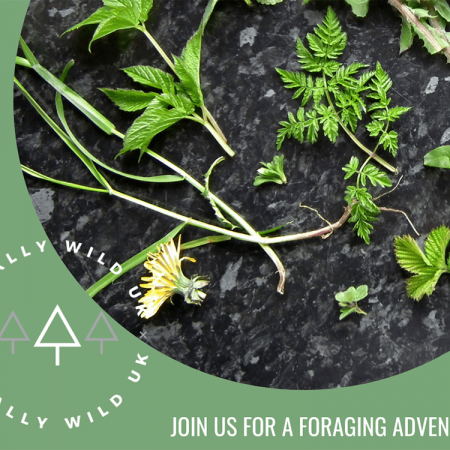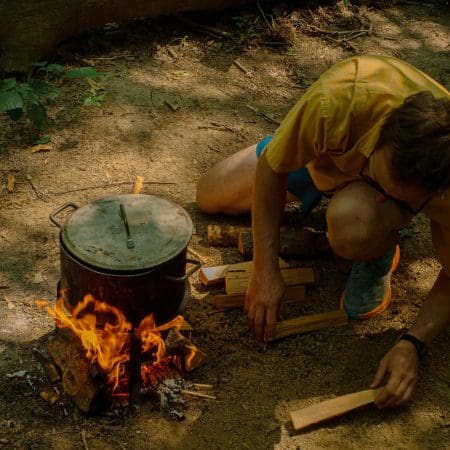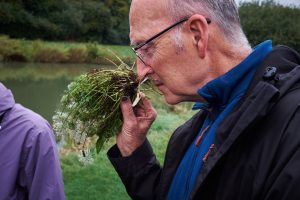Blackberry / Spring / Summer / Autumn / Edible
Through this piece we’re going to take a deep dive into everything blackberry, often an overlooked fruit by us foragers because it’s too main stream. A bit like when you loved a band more before you could hear them on radio one. But as with the band on radio one, there’s a true reason why everyone loves them and we should truly be celbrating blackberries!
Common Names
Blackberry, Brambles
Latin Name
Rubus Fruticosus
Known Hazards
The stem of this plant contains many thorns and spikes, it’s almost impossible to walk through brambles and it’s fairly common to catch or even rip clothing when around brambles.
Range and Distribution
A type or hybrid of blackberry can be found all over the world in places such as Australia, Asia, Europe, the UK, North and South America, China and Russia.
Habitat
Roadsides, verges, broadleaf woodland, hedgerows, gardens, canals, paths, railway sides, parks, almost everywhere.
Physical Characteristics
This scrambling shrub grows from 50cm-2ms in length, the length of the plants strong stem contains many thorns giving it its name “bramble”. The stems new shoots start off in a star shape with a soft centre, turning more rounded and woody as they get older.
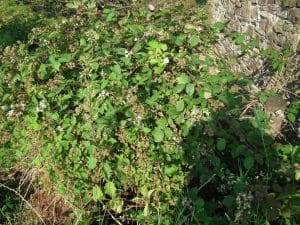
Leaves
The spear shaped leaves grow from 5-10cm, each containing 3-5 main teeth, being jagged along their whole edge. They’re dark green on top and light green below.
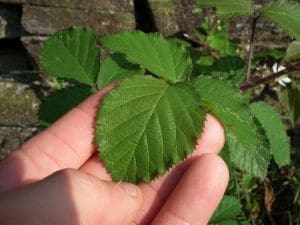
Flowers
The flowers are 2-3cms across, typically white to pink and contain 5 petals, flowering in bunches of up to 10.
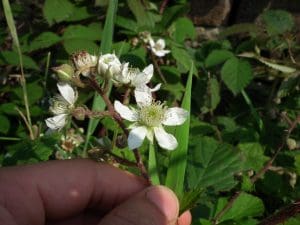
Fruit
This plant produces a large amount of fruit, which is why most people recognise this plant from picking it for making jam and pies. It’s certainly my memory from being younger.
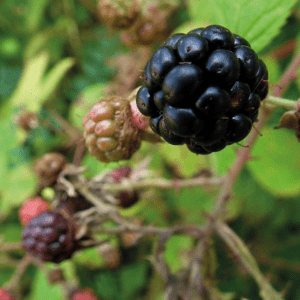
Edible Use:
Root: Best collected in winter, herbal use, could be incorporated in to a medicinal soup stock
Stem: young spring growth, Candied, pickled, Can be used as vegetable in soup (boiling in number of changed in water)
Leaves: Edible when young (good in pesto with wild garlic), Traditional herbal tea
Fruit/seeds: Under ripe green or red fruit can be pickled or candied, Ripe fruit has numerous uses from jam to juice, wine, sauces, sorbet, cordial, syrup.
Blossom: Tea infusion
Herbal
The chemicals that are responsible for blackberries colour are also mainly responsible for most of the healing benefits being tested of blackberries. These include flavonoids, salicylic acid, polyphenols and other phytochemicals, being used in preliminary research to toxicity of cancer.
High in vitamin C, K and the nutrient magnese.
Miscellaneous
If cut through winter and de-thorned by running your hand with fire gauntlets or a thick cloth up the stem, they make the most amazing weaving rods. They’re light and unbelievably strong, it’s almost impossible to snap these rods, they’re extra-long and can be weaved in to almost anything; definitely my favorite weaving material. To use these for weaving it’s best first to dry the rods outside for two weeks and re-hydrate them in water for at least 12 hours before weaving.




